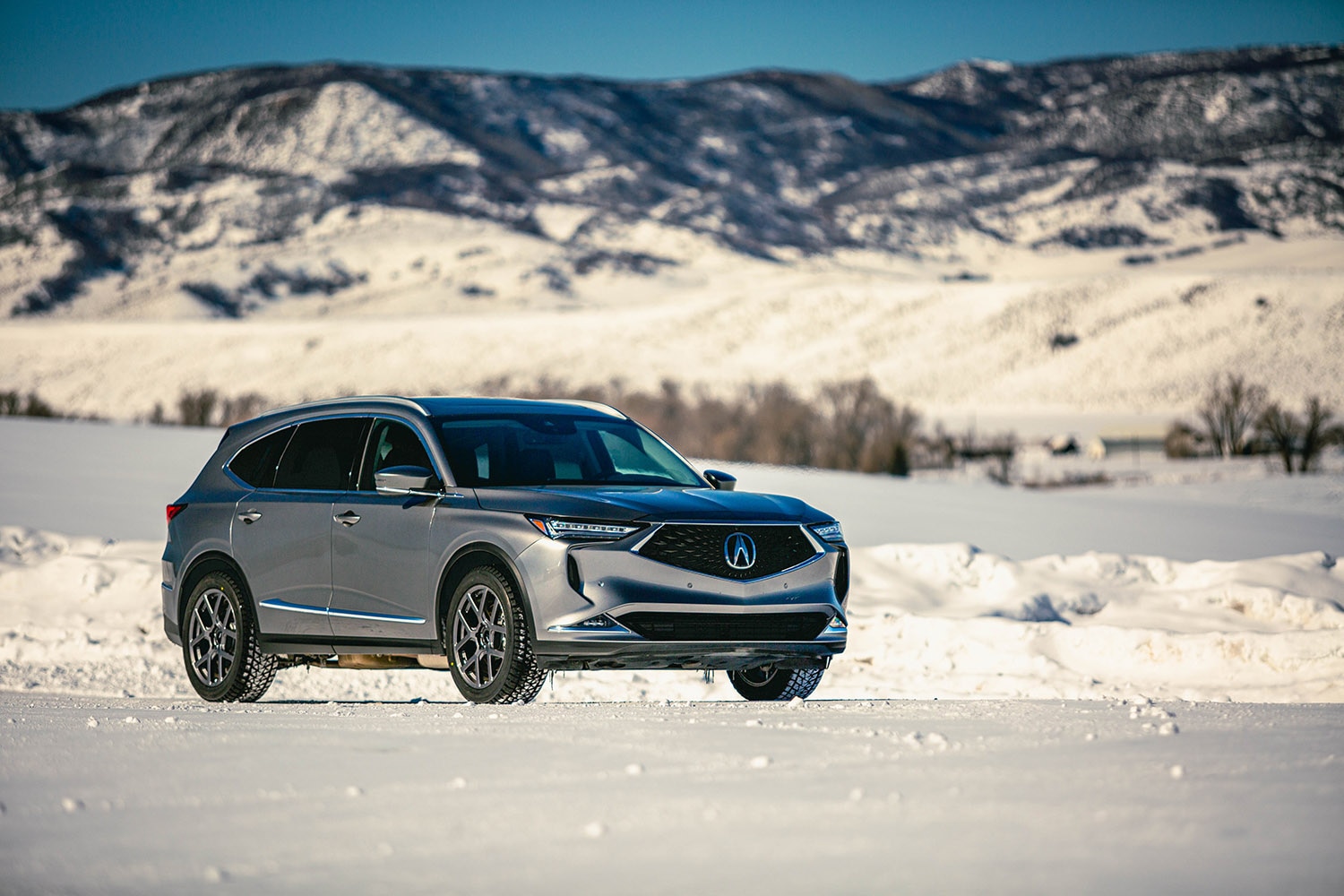The Best Winter and Snow Tires for SUVs and Crossovers
Four-wheel drive only goes so far. Make sure you’re prepared for winter with a set of dedicated tires.
 Manuel Carrillo III/Capital One
Manuel Carrillo III/Capital One
All-wheel drive (AWD) and four-wheel drive (4WD) can help your SUV move in low-traction situations, but four driven wheels won’t help you stop. That responsibility falls largely to the tires. Many SUVs wear all-seasons, which, despite their name, perform unremarkably year-round. Tires rated for all-season duty harden in cold temperatures, compromising their ability to grip the road. If you want to keep winter from biting you in the butt, we suggest investing in rubber made specifically to deal with the cold.
Winter tires (also known as snow tires) are designed to stick to snow, ice, and the frostiest asphalt, helping you maintain control of your vehicle in these tricky conditions. They do this by employing special rubber compounds that resist stiffening at freezing temperatures, and they feature “sipes,” or slits in the tread block, that allow the tires to flex and bite into packed snow.
Which winter tires will keep your SUV safe and controlled throughout the colder months? These are our picks.
Best Overall: Bridgestone Blizzak DM-V2
Come winter, drivers in large swaths of the country routinely face cold roads, deep snow, and slushy, wet asphalt. The Bridgestone Blizzak DM-V2 performs well in all three of these conditions, offering little compromise when it comes to handling, braking, and traction regardless of what the road looks like. The hydrophilic rubber compound helps the tire find traction on slick surfaces and remains soft and grippy as temperatures plunge.
Best for Cold, Dry Winters: Michelin Pilot Alpin 5 SUV
The Michelin Pilot Alpin 5 SUV is a performance-oriented winter SUV tire that aims to preserve your ute’s handling on dry pavement while delivering safe levels of grip in a blizzard. The tread design eschews the standard, chunky, winter-tire pattern in favor of a center tread band surrounded by broad, directional blocks. This keeps the Pilot Alpin 5 SUV from squirming during acceleration and cornering on chilly asphalt, but sacrifices a bit of performance in wet and slushy conditions compared with a traditional winter tire.
Best for Mixed Rain-and-Snow Conditions: Bridgestone Blizzak WS90
In regions where winter brings rain and snow, the Bridgestone Blizzak WS90 is a smart pick for your crossover. It provides excellent traction in the snow while resisting hydroplaning (i.e., uncontrollably sliding over standing water). As the mercury drops, the rubber compound stays pliable and wicks water away from the tread to improve grip.
Best for Ice: Nokian Hakkapeliitta 10 SUV
Ice is one of the greatest challenges for motorists and tire designers. For those who find themselves regularly dealing with frozen roads, a studded winter SUV tire is often the best solution. This design relies on metal studs that protrude from the tread and sink into the ice like talons into meat, working in combination with a pliable rubber compound to grip the slippery surface.
(A quick note of clarification: Studded tires come from the factory with studs already installed; studdable tires have predrilled holes that accept removable studs.)
Nokian has long been a leader when it comes to studded tires, and its latest model for sport-utility vehicles—the Hakkapeliitta 10 SUV—
Best for Year-Round Use: Michelin CrossClimate SUV
All-season tires provide decent grip in freezing conditions while resisting heat and excessive wear during summer months, but their performance can't match that of dedicated winter tires. That said, if you live in the Snowbelt, but want the convenience and minimal expense of maintaining just one set of tires, the Michelin CrossClimate SUV is a great option and a big step up compared with a standard all-season in the cold. Like a winter tire, the CrossClimate has ice- and snow-grabbing sipes in the tread blocks (albeit fewer of them than a typical snow tire), but its V-shaped tread pattern preserves handling and traction on dry roads. It's a compromise, to be sure, but it’s likely a safer choice in frigid weather than the tires fitted at the factory.
Written by humans.
Edited by humans.
 Benjamin Hunting
Benjamin HuntingBenjamin Hunting is a writer and podcast host who contributes to a number of newspapers, automotive magazines, and online publications. More than a decade into his career, he enjoys keeping the shiny side up during track days and always has one too many classic vehicle projects partially disassembled in his garage at any given time. Remember, if it's not leaking, it's probably empty.
Related articles
View more related articles